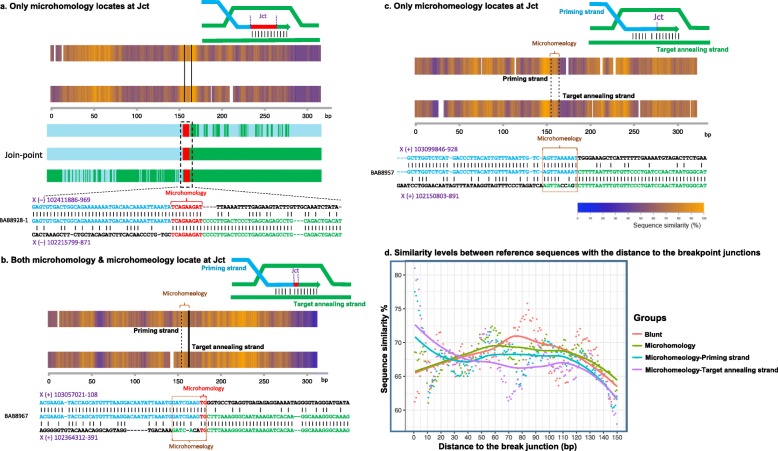Fig. 4.
Representative similarity plots (heat maps) between reference sequences surrounding CNV breakpoint junctions containing a only microhomology (> 2 bp of nucleotide similarity) flanked by solid vertical lines), b both microhomeology and microhomology, and c only microhomeology. We present here an example for each type of the observed junctional sequences using heat map (top) and the sequence alignment at a nucleotide level (bottom). Reference sequences were aligned using the Needleman-Wunsch algorithm, as described in the “Methods” section. The 5′ reference sequence is indicated in blue color and 3′ reference sequence is indicated in green. In the upper panel of heat map plot, the 5′ reference sequence was plotted as a rectangle on the top while the 3′ was on the bottom. The heat map shading indicates the sequence similarity level of a 20-bp moving window: orange-high similarity, blue-low similarity, and white-gap. Schematic figures in b and c indicate microhomeology-mediated priming strand (blue) invasion to the target annealing strand (green). Microhomology is shown in red. d An aggregative plot showing the change of similarity levels between reference sequences along an increase in the distance to the breakpoint junctions. We compared such patterns among four junction categories: blunt junctions (red), junctions containing a microhomology only (green), and the priming sides (blue) and target annealing sides (purple) of junctions containing a microhomeology

